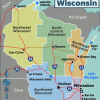New data from ATTOM has determined there were roughly 1.3 million U.S. residential properties that are vacant, as of the third quarter of this year. That figure represents 1.3%, or one in 79 homes, across the nation, the same level as in the second quarter.
ATTOM also reported 315,425 residential properties are in the process of foreclosure in the third quarter of this year, up 1.3% from the second quarter of 2023 and up 16.6% from the third quarter of 2022. Among those pre-foreclosure properties, about 8,800 sit vacant as zombie foreclosures (pre-foreclosure properties abandoned by owners), up by 0.3% from the second quarter and a 13.9% spike from one year earlier. This also marked latest increase marks the sixth straight quarterly gain, albeit a relatively scant uptick.
“Zombie foreclosures again are ticking up a tiny bit this quarter, tracking along with a small rise in overall foreclosure activity around the country. That’s to be expected, as a handful of homeowners who can’t catch up on overdue mortgage payments just walk away from their properties,” said Rob Barber, CEO for ATTOM. “But the big picture remains the same. Abandoned properties pose almost none of the blight threats they brought a decade ago when far more homeowners were throwing in the towel after the Great Recession of the late 2000s.”
A total of 8,782 residential properties facing possible foreclosure have been vacated by their owners nationwide in the third quarter, up from 8,752 in the second quarter and from 7,707 in the third quarter of 2022. The number of zombie properties has grown quarterly in 19 states and annually in 28, with the greatest quarterly increases recorded in Missouri (zombie properties up 51%, from 35 to 53), Maryland (up 22%, from 188 to 229), Oklahoma (up 15%, from 173 to 199), Connecticut (up 13%, from 77 to 87) and Pennsylvania (up 11%, from 401 to 446).
Barber added that “with a few exceptions – most notably New York City and Miami – lower-end markets still have the highest portions of zombie homes. That reflects larger portions of households with limited financial resources to avoid foreclosure,” Barber said. “Those areas are likely at higher risk for issues related to zombie foreclosure if the overall housing market turns back downward.”
















Make the process faster to sort out those properties. Low income , middle income and homeless need places to live and we still have record low inventory